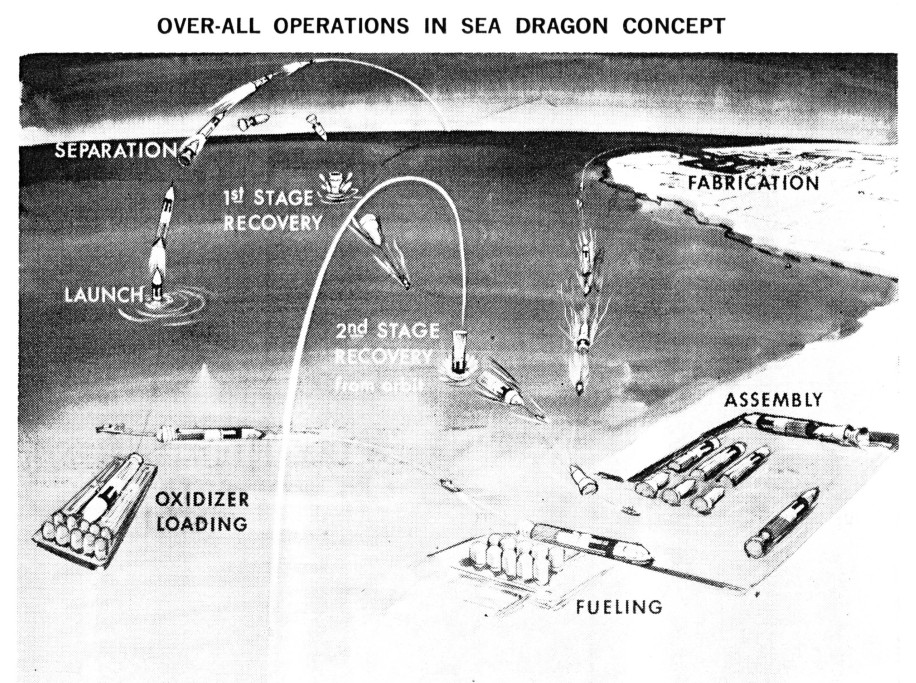Sea Dragon was, as is doubtless news to few around here, an early 1960’s idea at Aerojet for an extremely large, very simply two-stage pressure-fed space booster. It was meant to be as cheap to build and operate as possible with 1960’s tech, relying on scale to make it all work. Would it have worked? Maybe. Physics supports it. Would it have been cheap to operate? Hard to tell. “Simple as possible” does not equate to “simple,” and anything the size of Sea Dragon, especially screaming out of the sky to smack into the ocean while blisteringly hot… well, there are always risks.
In 1963 the idea of a pinpoint vertical landing a la the Falcon 9 would have been ridiculous, so splashdown was really the only way to go for a booster designed for simplicity. But as NASA and Thiokol found with dropping Shuttle boosters into the drink, recovery and refurbishment after salt water immersion can be a bit of a headache. The way to make a Sea Dragon truly economically competitive would be, as with Falcon 9, flight after flight after flight, often enough that it ceases to be an Amazing News Story and becomes, like the Falcon 9, seemingly dull and monotonous. But given the million-pound payload of the Sea Dragon it’s difficult to envision a space program following on the footsteps of Apollo that would have required a Sea Dragon every few weeks. It would certainly have been *nice* to have had such a program (and if the current pandemic takes down western civ it will turn out that the lack of such a program was criminally negligent) but the existence of a timeline with such a program seems a little difficult to envision.
The article, written by sea Dragon advocate Robert Truax, that the above illustration came from has been scanned and made available to above-$10 APR subscribers and Patrons.
